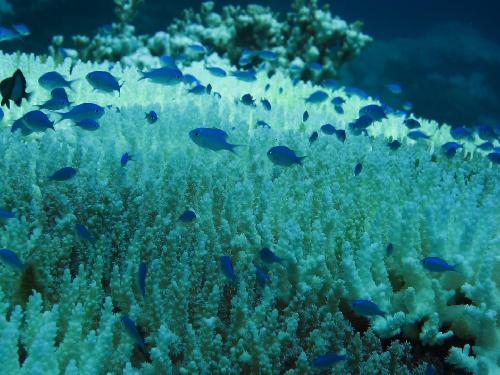In computer models, European scholars estimate substantially different climate change impacts for global warming of 1.5°C and 2°C by 2100, the two temperature limits policy makers agreed on in the Paris climate agreement.
The simulation concluded that an additional 0.5°C would mean a 10-cm-higher global sea-level rise by 2100, longer heat waves, and would result in virtually all tropical coral reefs being at risk.
The team's computer simulation derived a number of hotspots around the globe where projected climate impacts at 2°C are significantly more severe than at 1.5°C. One of these is the Mediterranean region, which is already suffering from climate change-induced drying. With a global temperature increase of 1.5°C, the availability of fresh water in the region would be about 10% lower than in the late 20th century. In a 2°C world, the researchers estimate this reduction to double to about 20%.

Obviously simulations are not data. We can't accurately simulate the weather a week from now and the climate is far more complex, but even limited models with only 11 indicators can try to show some parameters and provide some evidence basis for policy decisions, which has been lacking so far.
Their simulation estimates that in tropical regions, the half-a-degree difference in global temperature could have detrimental consequences for crop yields, particularly in Central America and West Africa. On average, local tropical maize and wheat yields would reduce twice as much at 2°C compared to a 1.5°C temperature increase.
"We found significant differences for all the impacts we considered," says the paper's lead author Carl Schleussner of Climate Analytics in Germany. "We analyzed the climate models used in the [Intergovernmental Panel on Climate Change (IPCC)] Fifth Assessment Report, focusing on the projected impacts at 1.5°C and 2°C warming at the regional level. We considered 11 different indicators including extreme weather events, water availability, crop yields, coral reef degradation and sea-level rise."
Tropical regions would bear the brunt of the impacts of an additional 0.5°C of global warming by the end of the century, with warm spells lasting up to 50% longer in a 2°C world than at 1.5°C. "For heat-related extremes, the additional 0.5°C increase marks the difference between events at the upper limit of present-day natural variability and a new climate regime, particularly in tropical regions," explains Schleussner.
The additional warming would also affect tropical coral reefs. Limiting warming to 1.5°C would provide a window of opportunity for some tropical coral reefs to adapt to climate change. In contrast, a 2°C temperature increase by 2100 would put virtually all of these ecosystems at risk of severe degradation due to coral bleaching.
On a global scale, the researchers anticipate sea level to rise about 50 cm by 2100 in a 2°C warmer world, 10 cm more than for 1.5°C warming. "Sea level rise will slow down during the 21st century only under a 1.5°C scenario," explains Schleussner.
Co-author Jacob Schewe, of the Potsdam Institute for Climate Impact Research in Germany, says: "Some researchers have argued that there is little difference in climate change impacts between 1.5°C and 2°C. Indeed, it is necessary to account for natural variability, model uncertainties, and other factors that can obscure the picture. We did that in our study, and by focusing on key indicators at the regional level, we clearly show that there are significant differences in impacts between 1.5°C and 2°C."






Comments